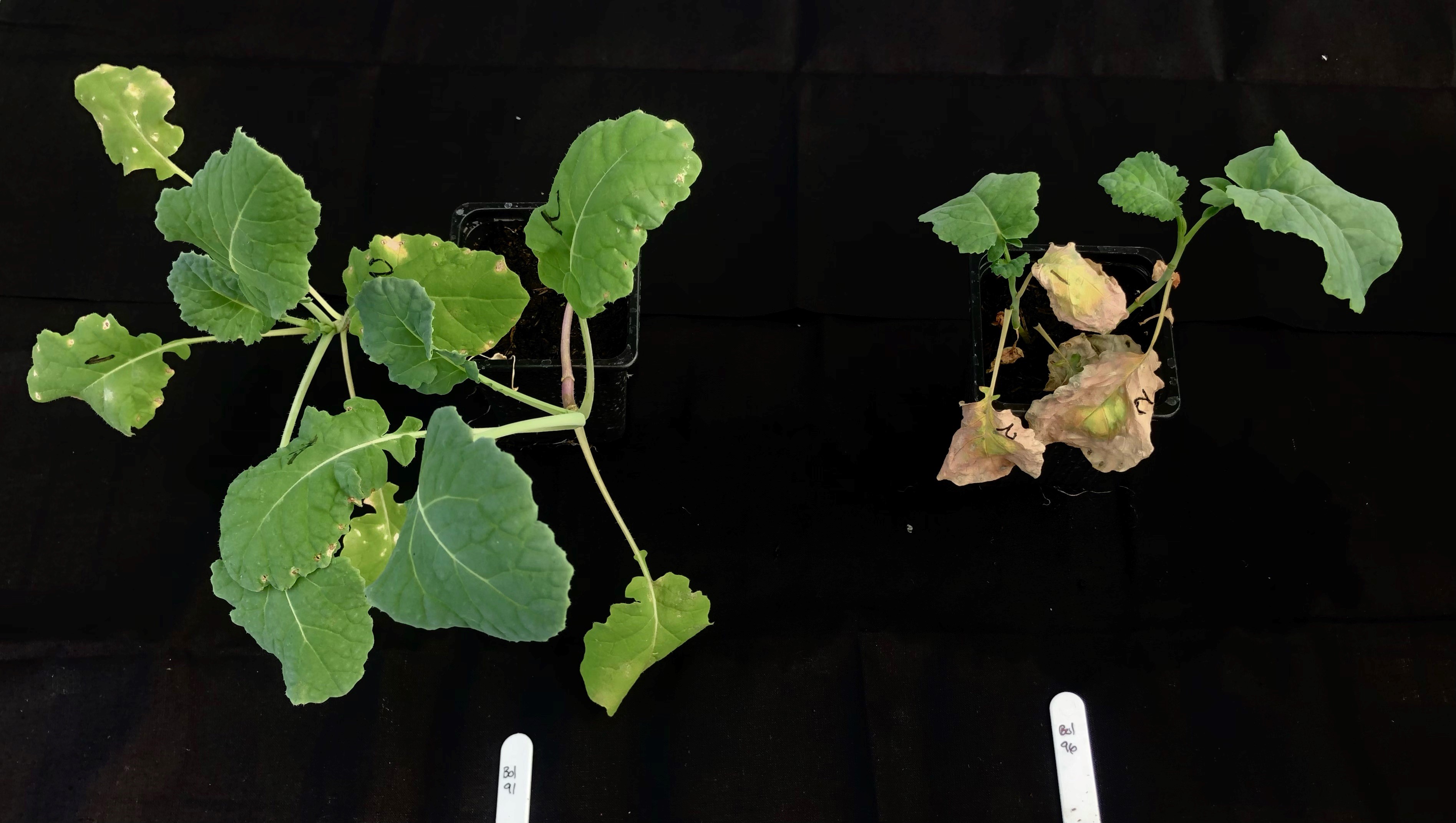Xanthomonas Plant Disease
Xanthomonas plant diseases: mitigating existing, emerging and future threats to UK agriculture
Research being carried out by Shannon Greer, supervised by Prof Murray Grant
The Xanthomonas Threats Consortium is one of nine projects on the Bacterial Plant Diseases Programme. These projects have been working together to gain a better understanding of plant diseases to protect UK farms, forests and gardens.
Xanthomonas is a bacteria that causes disease on over 400 plant species, many of which are important crops. In particular, the Xanthomonas Threats Consortium is interested in black rot of brassicas caused by Xanthomonas campestris pv. campestris (Xcc). In the UK, leafy brassicas (as opposed to oilseed rape) such as cabbage, cauliflower and Brussels sprouts comprise a fifth of the total field vegetable production, a ~£300million p.a. industry. Black rot is the most damaging bacterial disease of brassicas worldwide. Typical symptoms include yellow and brown ‘V’-shaped lesions that start at the edge of the leaf which reduce the quality and marketability of the crop.
Cabbages with yellow and brown ‘V’-shaped lesions, a classical symptom of black rot.
The Xanthomonas Threats Consortium has four integrated work packages to better understand and combat black rot of brassicas:
Sequencing Xcc
At the Warwick Crop Centre we have one of the largest collections of Xcc in the world. In collaboration with the University of Exeter, we are sequencing 900+ Xanthomonas isolates from our collection. Analysis of these sequences will allow us to better understand how these isolates have evolved over time and space, identify Xanthomonas virulence genes (those responsible for causing disease) as well as develop diagnostic tools.
Alternative control methods
The application of agrochemicals is damaging to the environment and are generally ineffective for the control of bacterial diseases like black rot. Instead, we are investigating alternative chemical-free control methods such as host resistance. We have screened 300+ brassica lines from diversity sets developed at Warwick Crop Centre and have identified a number of resistant lines. These lines can be used to breed new black rot resistant brassicas. We are also investigating the use of Trichoderma, a beneficial soil fungus, for the control of black rot.

Black rot resistant (right) and susceptible (left) brassica plants (left).
Imaging Xcc Infection
Xcc is a vascular bacteria meaning it moves around in the plants “plumbing”. To help visualise black rot infection in brassica we have developed Xcc strains that are tagged with an easily visible luminescence marker. We can now see the bacteria move from the edge of the leaf down the veins and its presence in parts of the leaf that are not yet showing symptoms. Using these luminescent strains and other imaging tools we will gain a better understanding of the black rot infection process.

Brassica leaf infected with the black rot causing bacteria that has been tagged with a luminescence marker. Leaf imaged with a standard camera (left), same leaf imaged with a luminescence camera (right). Images courtesy of Srayan Ghosh.
Risk assessments for emerging and future Xanthomonas threats to UK agriculture.
As well as investigating black rot of brassicas, we are working with Fera Science Ltd. to monitor and assess the risk of emerging and future Xanthomonas threats (i.e. already a problem in other countries) to other UK crops like black rot of watercress, angular leaf spot of strawberry and bacterial leaf streak of maize. These studies will help reinforce UK biosecurity.

